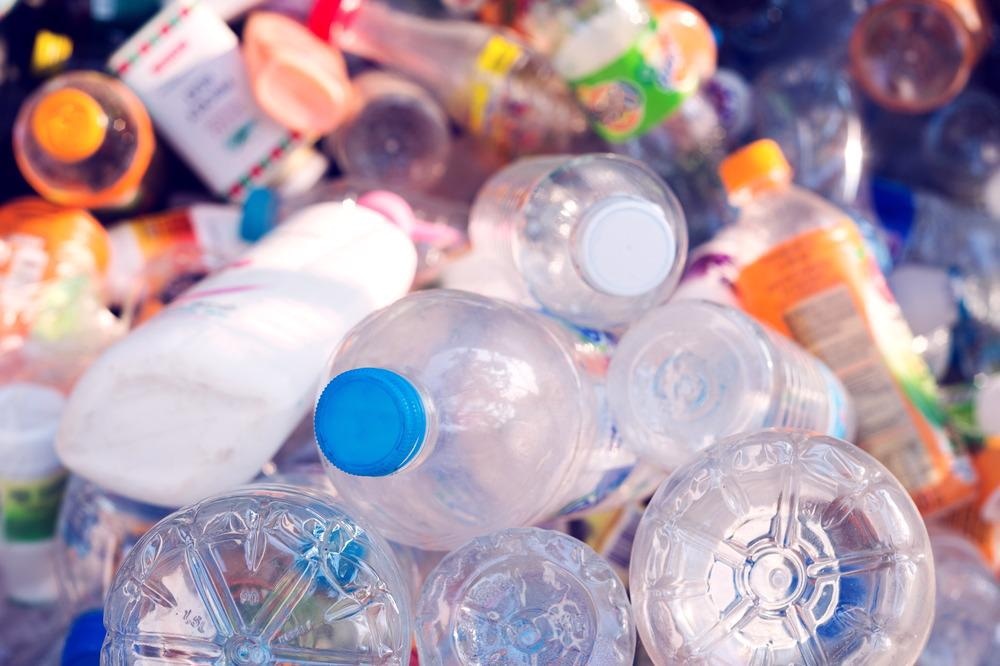Global plastic production is reported to have risen from 2 million tons to 360 million tons between 1950 and 2018, with 30% of these items being manufactured in China. Around 50% of this plastic is single-use, with estimates of 12 billion tons of plastic waste being present in landfills by 2050. A new study presented in the Journal of Environmental Chemical Engineering explores options for recycling this plastic waste into high-value products.

Study: From plastic waste to wealth using chemical recycling: A Review. Image Credit: Teerasak Ladnongkhun/Shutterstock.com
The COVID-19 pandemic has exacerbated the issue of plastic waste, with much of the necessary personal protective equipment, disposable utensils, and tableware and plastic-packaged food being either single-use or non-recyclable.
Plastic waste tends to be comprised of a range of polymers; for example, polyethylene (PE), polyethylene terephthalate (PET), polyvinyl chloride (PVC), polypropylene (PP), and polystyrene (PS). In order to help streamline and encourage the recycling of commonly used plastics, The Society of the Plastics Industry has developed a series of plastic recycling codes.
The review outlines a range of commonly employed plastic recycling techniques, saying that while incineration offers the potential to reduce the volume of plastic waste by up to 99%, this method is far from ideal.
The incineration of plastic produces an array of toxic gases including polycyclic aromatic hydrocarbons, carbon monoxide, and furans, while the bottom ash formed during the incineration process contains significant amounts of microplastics – a major threat to ecosystems and food chains.
The disposal of plastic in landfill sites is also highly problematic, with these sites often seeing plastic wastes being decomposed into microplastics before being released to underground rivers or soil via the leachate. Plastics also take an exceptionally long time to degrade, if at all.
These factors have led to considerable research and scientific focus on the safe and effective recycling and re-use of plastics.
Currently, the labor- and cost-intensive process of mechanical recycling is the only viable means of disposing of large-scale plastic waste, but secondary plastics produced via this method are often sub-optimal with limited use options due to their weak mechanical and unpredictable rheological properties.
Work is ongoing into the application of biological plastic waste recycling via microorganism cultivation or enzyme extraction, but this method is thus far only applicable to plastics with hydrolyzable ester bonds or amide bonds in the primary chain.
Chemical recycling may be a more useful option that is attracting considerable attention. This approach aims to convert plastic waste into more valuable chemical feedstocks with the potential to be used in more demanding applications.
Common chemical recycling methods include pyrolysis, solvolysis, and gasification, with each of these methods offering specific advantages and disadvantages.
Further Reading - Plastic Alternatives: Where Are We Now?
Pyrolysis is a popular chemical recycling method offering good raw material tolerance and versatility. This process involves heating the plastic waste in an inert atmosphere to allow the polymer structure to be cross-linked or depolymerized, reducing the material’s durability and integrity and allowing this to be re-formed into new products.
Solvolysis is used to chemically treat individual plastics or depolymerize these into monomers using solvent molecules. This commonly used technique is generally performed at high temperatures from 80 °C to 280 °C.
Gasification, however, enables plastic waste to be converted into combustible gas with high calorific values. This is typically achieved via processes such as gas-phase drying, pyrolysis, cracking and reforming reactions, and heterogeneous carbon gasification.
Through a combination of these approaches, it is possible to convert a range of single or mixed plastic waste into useful, high-value products such as fuel products, refinery feedstock, monomer products, and chemical upcycling products.
The authors anticipate that these existing technologies will continue to be optimized, supplemented, and in some cases superseded by emerging technologies such as microwave heating, ultrasonic-assisted treatment, single-pot hydrogenolysis, and aromatization.
There is considerable work to be done to address the global plastic problem, not least to begin to address and reclaim the significant amounts of hazardous plastic waste already present throughout the natural environment.
Many of these current and emerging technologies suffer notable drawbacks in terms of their high energy consumption and limited options for the recovery and reuse of expensive catalysts.
With this in mind, the authors conclude by proposing a number of suggestions for future research and developments in this area. They recommend an in-depth study of the mechanisms involved in the chemical recycling of plastic waste, as well work to improve the tolerance, recyclability, and applicability of catalysts to large-scale plastic recycling which is currently only achievable via manual recycling.
Tackling the global plastic crisis will also require a more holistic approach, looking beyond plastic recycling technologies to wastewater treatment and soil remediation, for example.
Chemical recycling offers the capacity to produce robust, versatile, and applicable plastic with original material properties, but there is considerable work to be done in terms of understanding the economic and environmental impact of chemical recycling.
Despite these challenges, chemical recycling offers considerable promise to better manage and minimize plastic waste.
References
Jie Jiang, Ke Shi, Xiangnan Zhang, Kai Yu, Hong Zhang, Jing He, Yun Ju and Jilin Liu, From plastic waste to wealth using chemical recycling: A Review, Journal of Environmental Chemical Engineering, (2021) https://www.sciencedirect.com/science/article/pii/S2213343721018443?via%3Dihub
Disclaimer: The views expressed here are those of the author expressed in their private capacity and do not necessarily represent the views of AZoM.com Limited T/A AZoNetwork the owner and operator of this website. This disclaimer forms part of the Terms and conditions of use of this website.